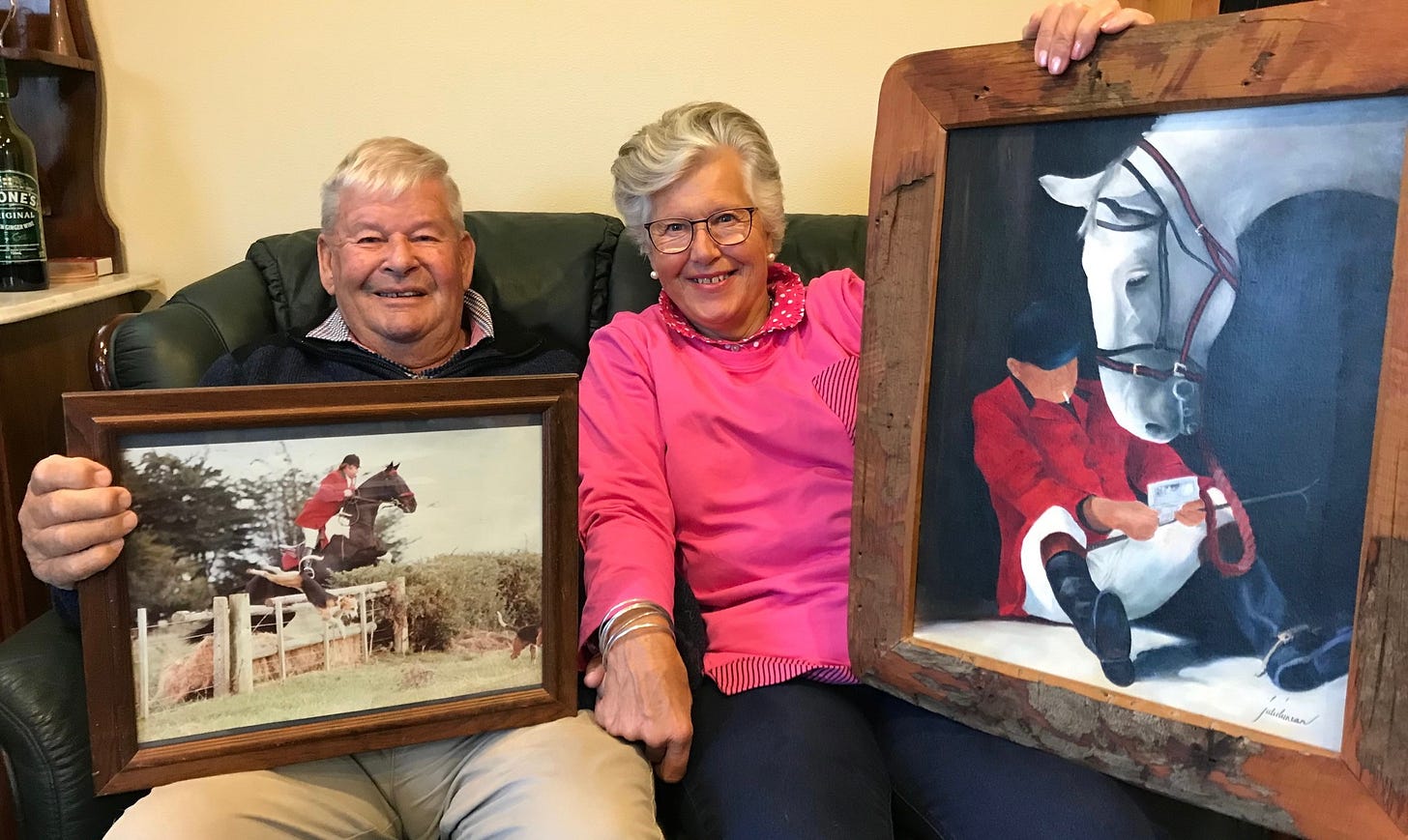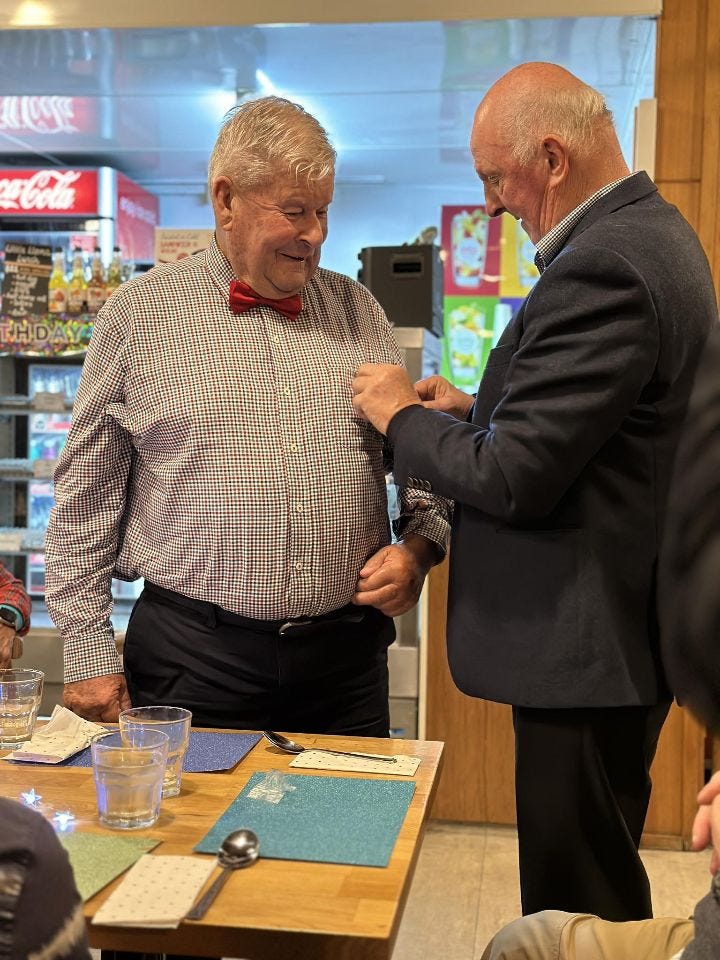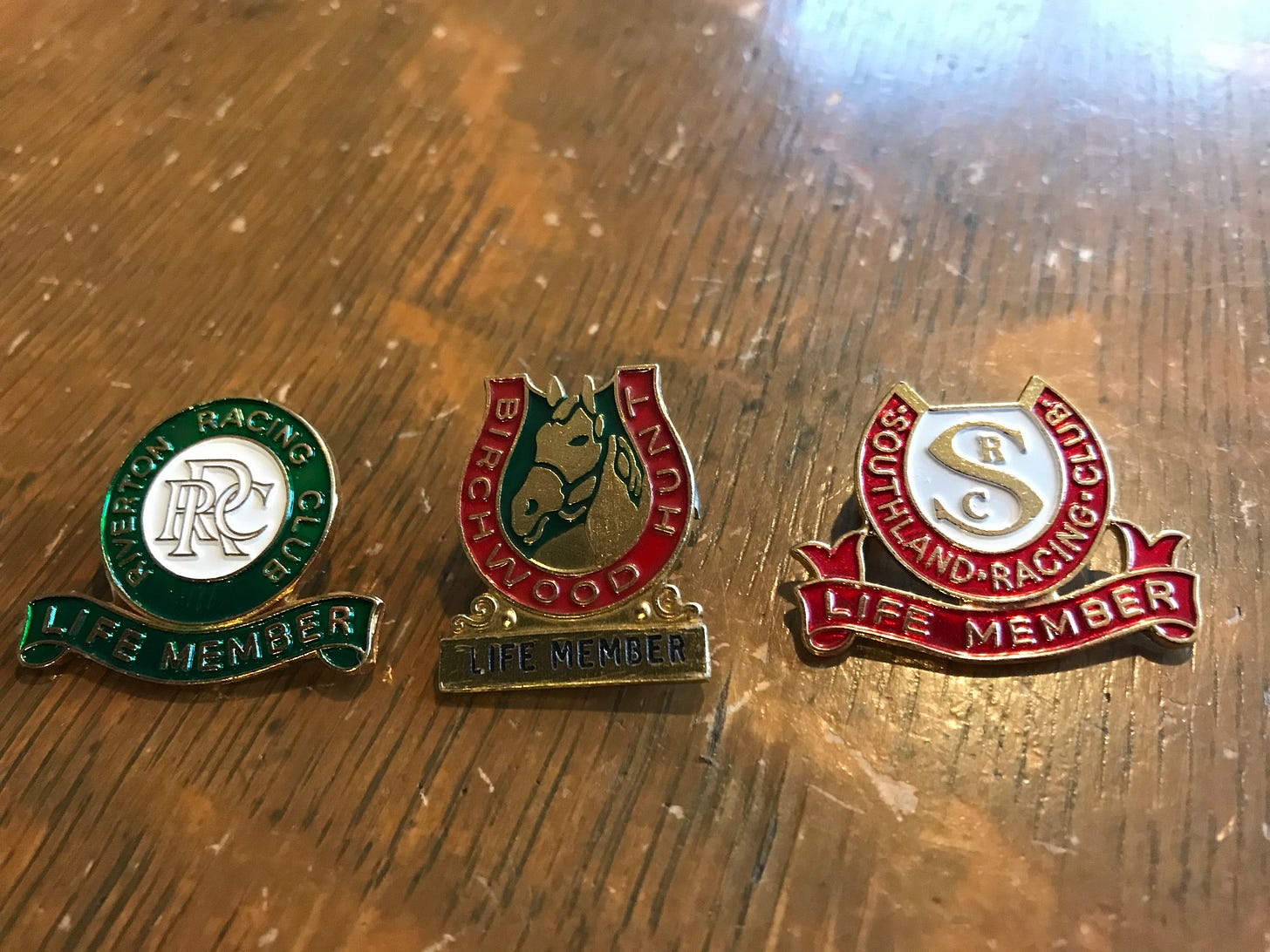Len Insall: 'Not a day goes by that I don't think how lucky I am to be alive'
The enjoyment Len Insall got from being involved with the racing communities had helped keep his spirits up over the years when dealing with the three strokes.

Jamie Searle is a long-time Southland racing writer. For more of his work head to the Southland Thoroughbreds Facebook page.
Friendships and support from the horse racing communities have helped Len Insall get through the tough times experienced from three strokes.
Insall, 80, is a life member of the Southland Racing Club, Riverton Racing Club and Birchwood Hunt Inc. Also on the Southland Racing Club's committee, he is more widely known for his work, from 1961 to 1998, as the clerk of the course at Southland harness and thoroughbred race meetings and being the Birchwood Hunt's huntsman.
His first stroke was in 2007, the second struck in 2018 and third in 2019.
After the third stroke his left side was partially paralysed and it had remained that way.
The first stroke forced him to give up riding horses.
Insall's work on the SRC's committee has included him and wife Rosie Innes setting up a bar and seating area at the top of the main grandstand at Ascot Park.
Known as Lenny's Bar, its popularity has given the couple considerable pleasure and satisfaction.
"It was just an empty room when I got on the committee [in 2005]," Insall, of Invercargill, said.
"By setting up the bar you're mixing with so many people. You know everybody
... it's been a lifesaver for me."
Insall looks forward to socialising with friends at thoroughbred and harness race meetings in Southland, especially at Lenny's Bar.

The enjoyment he got from being involved with the racing communities had helped keep his spirits up over the years when dealing with the three strokes.
"Not a day goes by that I don't think about how lucky I am to still be alive," Insall said.
He was busy with his painting business and riding horses when out of the blue he was hospitalised with the first stroke - a brain bleed - at the age of 62.
"I was on life support for a fortnight and they had a chopper on standby to take me to Dunedin Hospital," Insall said.
His recovery included a 10-week stay at the ISIS Centre (known now as the Puawai Rehabilitation Unit) at Wakari Hospital in Dunedin.
He had double vision and had to learn how to walk and talk again.
"I had no income for two or three years while those things were coming right.
"I was lucky I had rental properties ... we struggled through with them."
Insall's second stroke occurred five ago while sitting in a chair.
"Suddenly, I couldn't move ... couldn't move my arms, legs and couldn't stand up," he said.
His mouth went lopsided and he was slurring his words.
Like in the first recovery, Insall had to learn how to walk again.
His third stroke struck when he was in bed and unable to move to go to the toilet. He eventually was able to stand up, but he lost his balance and crashed into doors and other objects.
Wife Rosie called for an ambulance. His recovery included being taught how to walk for the third time. With this stroke he was permanently left partially paralysed on the left side.
"It takes a long time to adjust. You can't do what you want to do and you get periods of depression," Insall said.

Meanwhile, a framed painting in the main grandstand at Ascot Park was donated to the Southland Racing Club by Insall.
The Birchwood Hunt Inc commissioned artist, the late Peter Beadel, to paint a hunt in action. The artwork was presented to Insall in 1972 in appreciation for 10 years' service to the hunt.
Insall was grateful to receive it but thought, with it being such a magnificent piece that it should be in a public space for all to see, rather than on a wall in his home.
He mentioned the idea to the hunt president at the time, Frank Plunkett, who spoke to Southland Racing Club president Bill Thompson.
Thompson offered space for the painting on a wall on the first floor of the main grandstand at Ascot Park.
In his role as clerk of the course Insall remembers at two Ascot Park thoroughbred race meetings, on consecutive Saturdays, the same horse broke free and got onto Racecourse Rd. Both times the horse was caught by Insall close to the eastern cemetery on Tay St.
During his time as the clerk of the course in harness racing, he recalled bringing Cardigan Bay to a stop after the finish line at Ascot Park in the 1960s. One of Cardigan Bay's reins broke during the race. Cardigan Bay was driven in that race by Robert Cameron.
Insall remembers the barrier attendants striking for the last race at an Ascot Park thoroughbred race meeting in the 1970s. Insall helped to load horses into the barrier after tying his clerk of the course horse to a fence.
The ambulance driver, Frank Young, also lent a hand to put horses into the barrier at the 1400m start.
"I think they were striking over wages," Insall said of the barrier attendants.
One of the horses he used for the clerk of the course work was Erniemite, who won the 1982 Southland Horse of the Year title in show jumping.
Successful racehorses owned by Insall and his wife Rosie include Kidunot (Great Northern Hurdles), Humbucker (Timaru Cup), The Waysider (Riverton Cup) and steeplechase winner Railbird.






👆👆👆
Love Lenny’s Bar